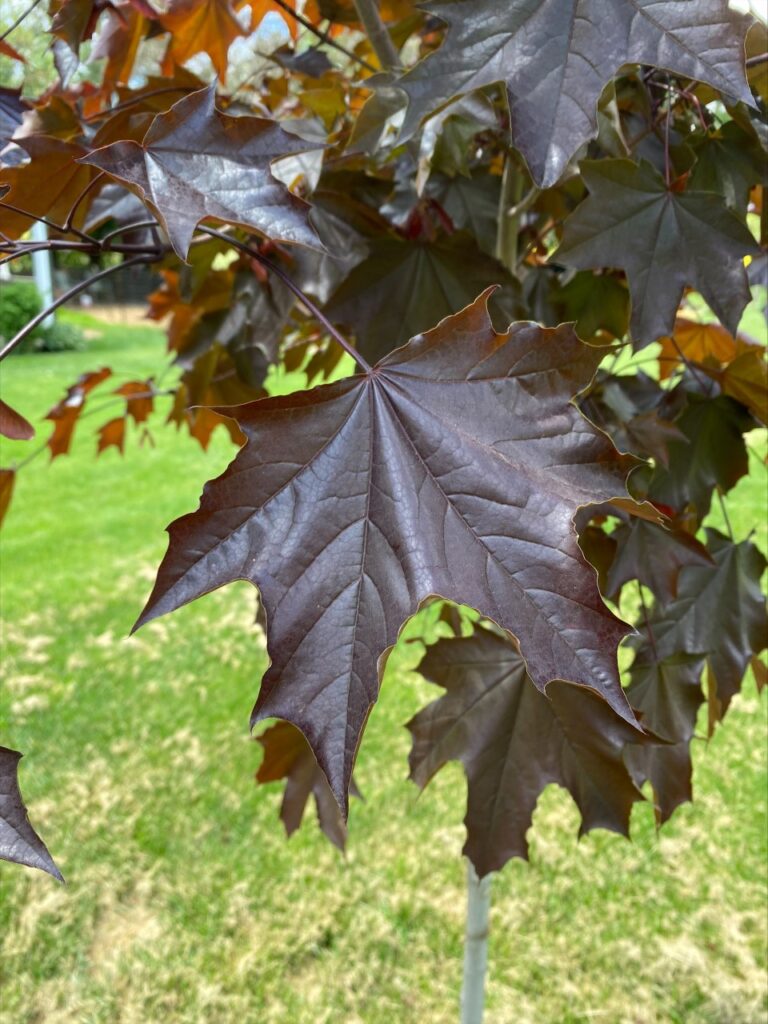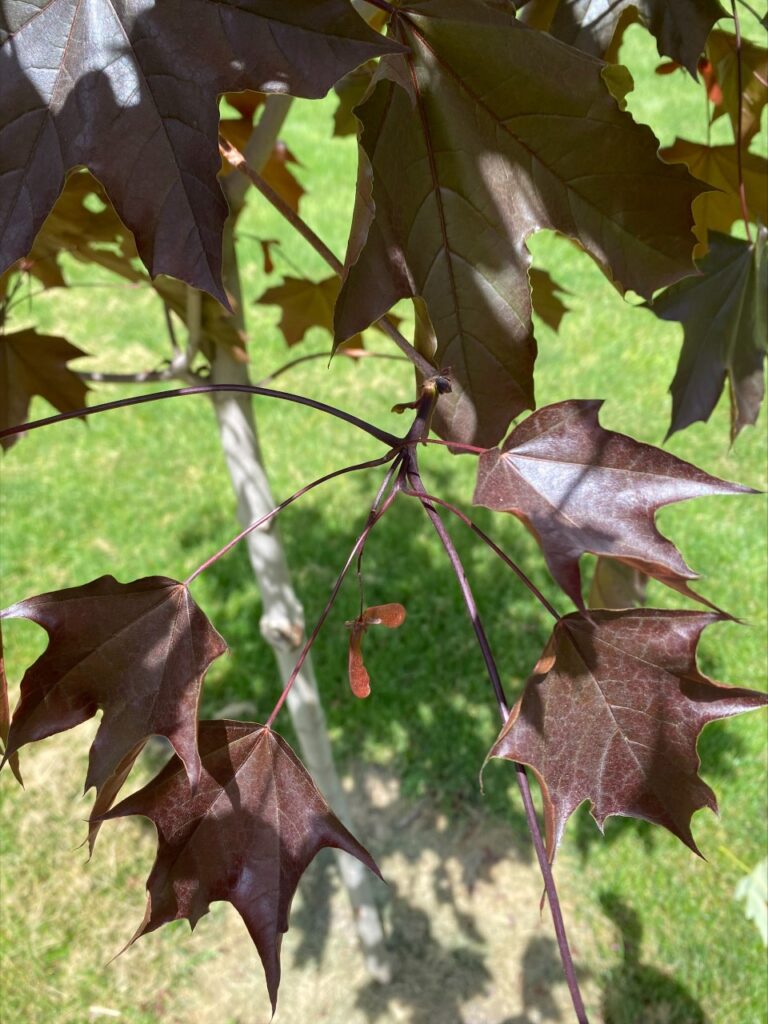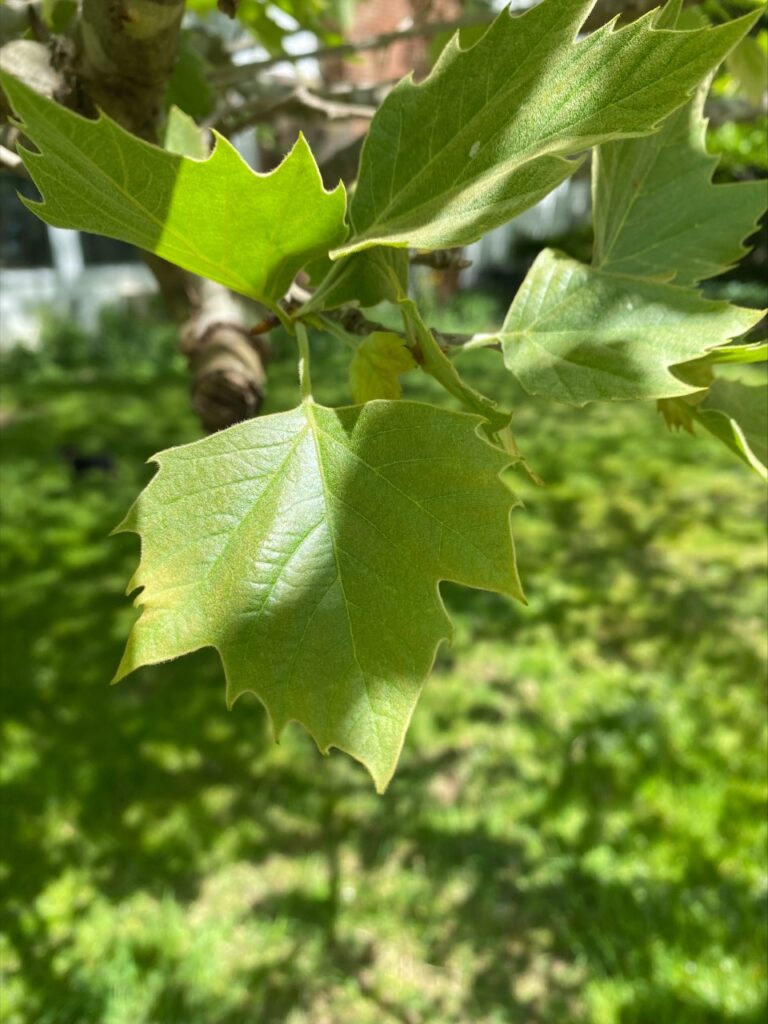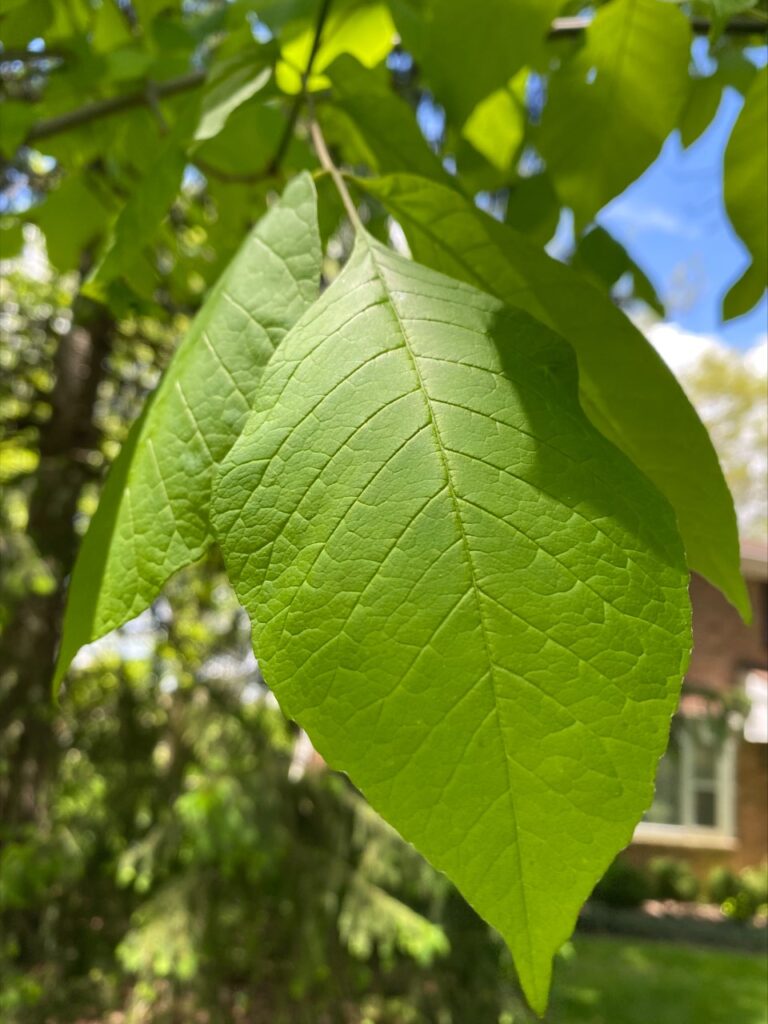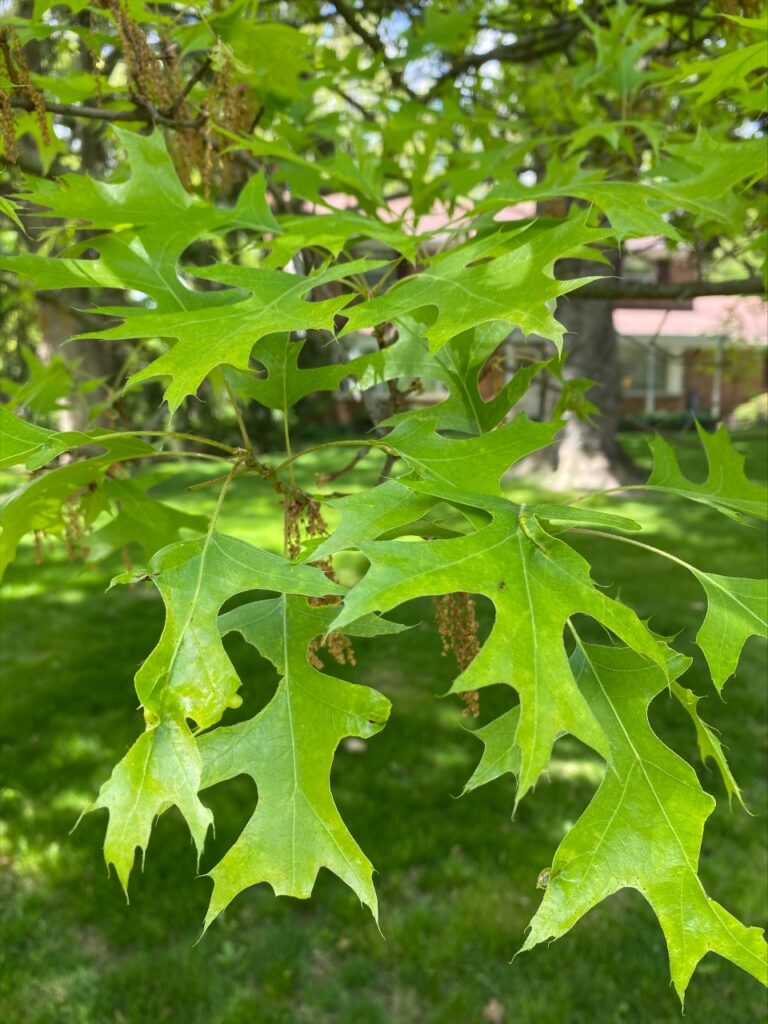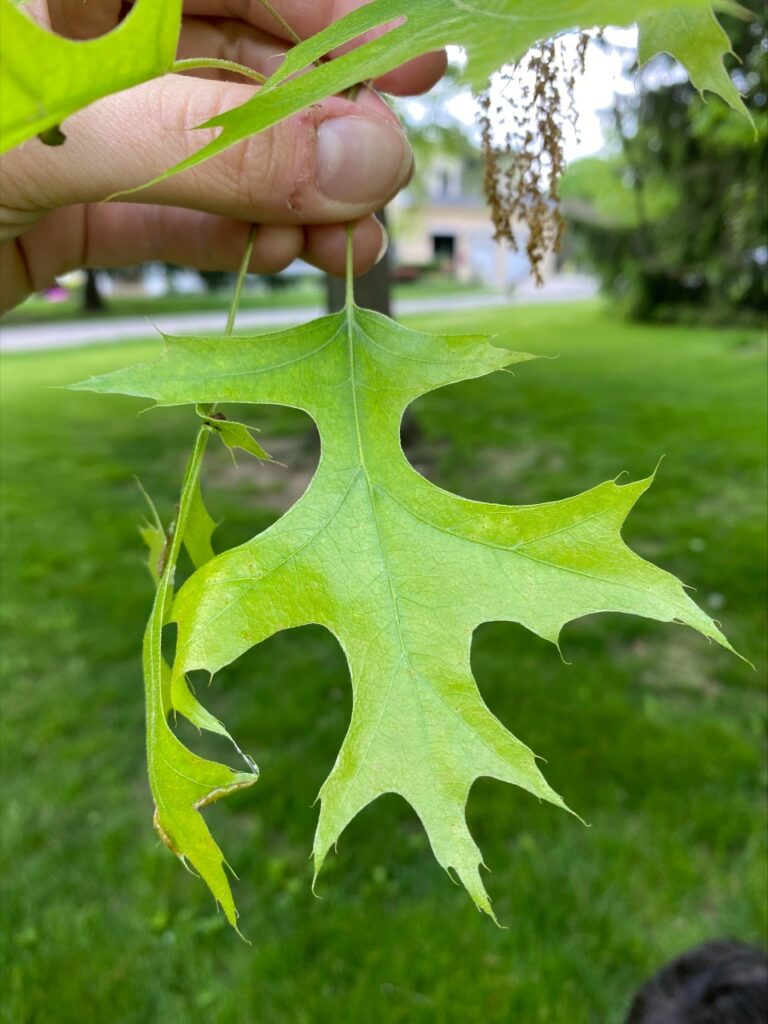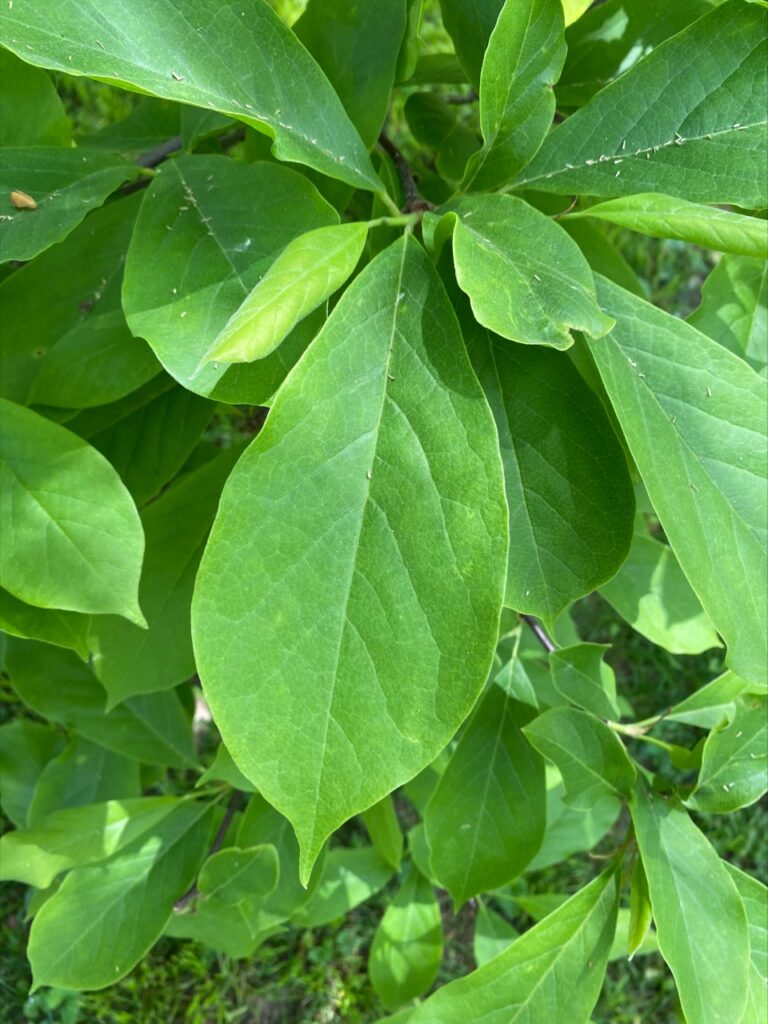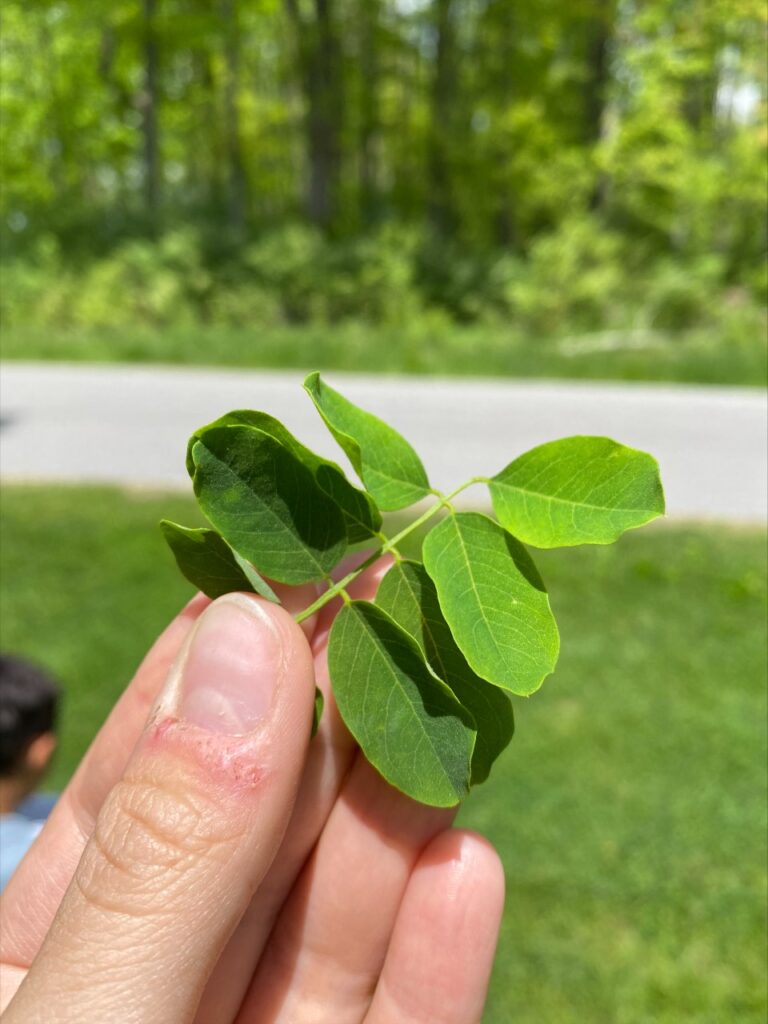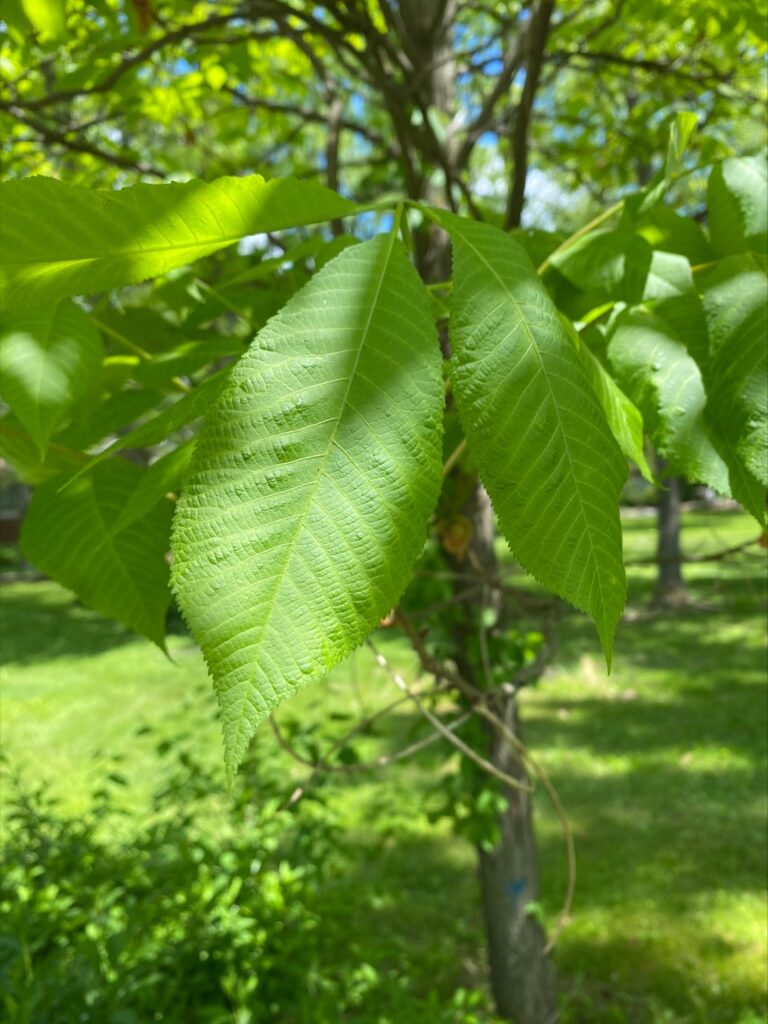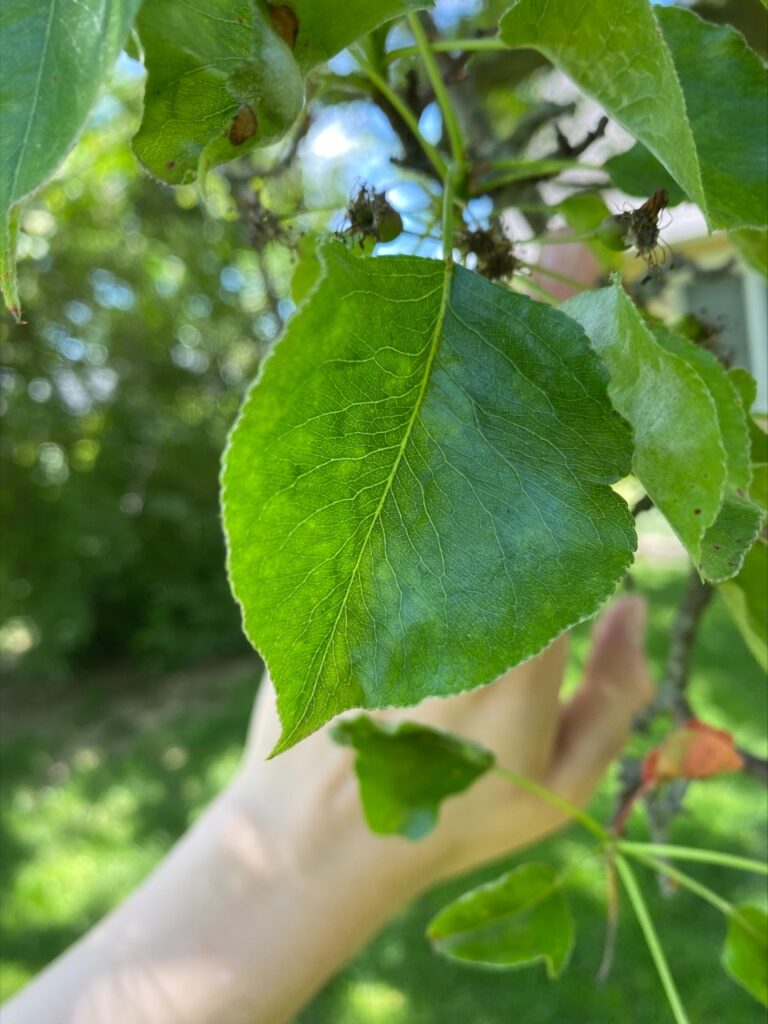Exploring the Trees in my Neighborhood
Hello everyone! Join me in exploring the trees in my neighborhood with my little neighbor and my new puppy Toni!. Today (May 14th, 2022) was HOT. There aren’t that many houses in my neighborhood therefore there are a lot of trees, so we had to stop multiple times to explore different trees. I live on an acre of land and my neighborhood is close to 1-70. There is also a river that runs through my neighborhood with some trees that like to grow by it. Although we are close to the highway we are also close to the woods which offer a variety of different plant life. After finding 8 trees I wanted to explore more and ended up finding more information than I thought I would! 8 might seem like a lot, but I promise you’ll end up wanting to learn about WAY more than 8 trees:).
Understanding my own Tree Blindness
I have to admit though I am rather tree blind when it comes to knowing about trees, not to mention I am also plant blind in general, but right now the focus is trees. In an article published by Gabriel Popkins he assured me that my tree blindness can be cured (maybe not right now, but eventually)! Generally, waisting food really does bother me, and Gabriel Popkins let me know in his article titled “Cure Yourself of Tree Blindness” that trees have a lot to offer in terms of food! (. Let’s just say, I have been wasting quite a lot of food! But never fear it is never too late to learn. My goal for myself is to start eating the pears from my tree in my backyard.
Norway Maple
(Acer platanoides)
Typically when we think of trees we think of green leaves (at least those of us that identify as partially or completely tree blind). I however bet some of you have seen a Norway Maple (Acer plantanoides) with beautiful purple leaves in the summertime. The Norway Maple has simple, opposite smooth lobed leaves. They have few teeth, broad bases, and the leaves tend to generally be wider than they are long. You can usually tell a Norway maple apart from other maples because it tends to leaf out earlier in the spring and according to Peterson’s Field Guide, Norway Maples have a unique milky fluid that oozes from freshly broken leaf petioles. This maple was found in my backyard close to the main road and according to Norcross Wildlife, this type of maple can stand and adapt well to different soil extremes. The Norway Maple can be found dispersed around the world and all over North American in a variety of conditions (https://www.norcrosswildlife.org/wildlife-sanctuary/flora-fauna/invasive-plants/norway-maple/). Norway maples prefer full sun and as you can see here there is minimal to no shade. Norway maples tend to grow along roadsides so the location matches up perfectly. Norway maples are considered invasive species because they are encroaching on natural forests and due to their dense shade they are preventing other maples from growing. What poor babies!
Aside from the Norway Maple being an invasive species they are still pretty cool and the amount of shade they can produce can be beneficial. Interestingly enough they are grown most commonly in towns and cities because of this! Next time you go on a walk keep your eye out for a maple. (https://www.woodlandtrust.org.uk/trees-woods-and-wildlife/british-trees/a-z-of-british-trees/norway-maple/).
American Sycamore
(Plantanus occidentalis)
The great American Sycamore! The sycamore in my opinion is a beautiful tree that has alternate, simple and palmately veined leaves. When reading about the Sycamore in Peterson’s field guide he mentions their size. They. Are. Huge. They also have distinctive mottled brown bark that flakes like jigsaw pieces. My neighbor has a sycamore and this is very true you can pick up pieces of the bark and you’ll have more luck fitting two pieces together than you would with a 1,000 piece puzzle. In terms of the leaves they have very large teeth usually 3-5 lobed.
Sycamores grow extremely well in wet areas and when it rains my neighbors yard is always drenched so it’s location makes perfect sense. They also like to grow on the interface between land and a stream or river.
When reading about the Sycamore in Peterson’s field guide a fun fact that I found fascinating was mentioned. Did you know that a canoe made out of a sycamore tree by Indians was 65 feet long and weighed 9000 pounds?! That’s CRAZY!
White Ash
(Fraxinus americana)
The white ash has opposite, pinnately compound leaves that are oval in shape. When reading about the white ash in Peterson’s field guide he mentions that the white ash is easily recognized by it’s twigs that are in either a V or U shape. Leaflets are 5-9 stocked, usually white or pale beneath. White ash trees are also identified by their dark and tight trunk bark. Peterson also mentions that in doubtful cases of identification, white ashes can also be identified by their fruit. When observing the white ash, I noticed its dominant trunk and pyramidal shape.
The specific white ash that I identified was located in my next door neighbors yard. The area was receiving quite a bit of sun but is also shaded during some parts of the day. Overall, it is in a well drained area surrounded by some other trees and plants. The white ash according to Peterson’s field guide prefer moist well-drained soils and full sun. They also grow near riverbanks. Unfortunately, some white ashes are falling victim to the Emerald Ash Borers in our area. This is taking a considerable toll on the white ash population in our area.
Are you a music person?! I am! I was surprised to learn that the wood of white ash trees is often used to make musical instruments! (Source: Peterson’s Field guide)
Pin Oak
(Quercus palustris)
The Pin Oak, also known as the Quercus palustris, can be found in multiple locations across the United States. As discussed in Peterson’s Field Guide, the Pin Oak features lobed leaves that are alternate, simple, and glossy. The lower branches of a Pin Oak are pointed downward which I was able to notice when inspecting this tree. The fruit that this tree produces is known to attract squirrels and also contributes to a litter problem when the tree drops the fruit. (https://edis.ifas.ufl.edu/publication/ST555)
When looking for a pin oak in my vicinity, I did not have to search far! I also found this spectacular tree in my next door neighbors yard. My neighbors yard is well-drained and the Pin Oak is known for liking well-drained areas. They also prefer soil that is rich, moist, and sandy. Pin oaks grow in various forests. This surroundings mimic that of a typical suburban yard near the woods, and it was found on level ground next to its good friend, the white ash tree.
While looking in to this variety of tree, I was excited to learn that a few varieties of caterpillar enjoy feasting on the Pin Oak foliage. Ever heard of the very hungry caterpillar? This tree would be his favorite restaurant! (https://www.illinoiswildflowers.info/trees/plants/pin_oak.html)
Yulan Magnolia
(Magnolia denudata)
The tropical appearance of the Yulan Magnolia, scientifically known as the Magnolia denudata allows for relatively easy identification. The large leaves, featuring smooth edges, are a rich leather texture and oval shaped. These luscious leaves are arranged in a simple and alternate pattern. Most notably, these trees are often cultivated for their large leaves and showy white flowers. The flowers are cup shaped and can sometimes even resemble birds! This trait makes the Yulan Magnolia a fan favorite. As this variety is a single trunked, multi-stemmed tree, created a dramatic scene in any garden.
The Yulan Magnolia that I found in my neighborhood was located right on the corner of my street. I noticed that it did sprout from the base, just as Peterson’s Field Guide described. These trees thrive in hot weather and sun, so they must be very happy this week! Oftentimes, Yulan Magnolia’s can be found in thickets. The Yulan magnolia was surrounded by a few other trees and was growing on a bit of a steep hill which makes sense because they do not like wet soil.
Another appeal of this amazing plant, is the fresh lemon scent that they emit. It is said, that the blossoms are a gift worthy of an ancient Chinese ruler. Most people don’t know that it is not bees who are responsible for pollinating this flowering tree, it is actually beetles! (https://www.gardenia.net/plant/magnolia-denudata-yulan-magnolia)
Black Locust
(Robinia pseudoacacia)
The Black Locust, or Robinia Pseudoacacia, is a medium sized tree with once compound leaves. These leaves are opposite in arrangement and egg shaped. This tree has the defining feature of 1/2″ to 1″ thorns lining the branches. When flowering, the tree features medium size, white fragrant clusters. The Black Locust has moderately stout twigs and produces white hairy buds and it’s bark can become dark, deeply ridged and cross hatched on more mature trees.
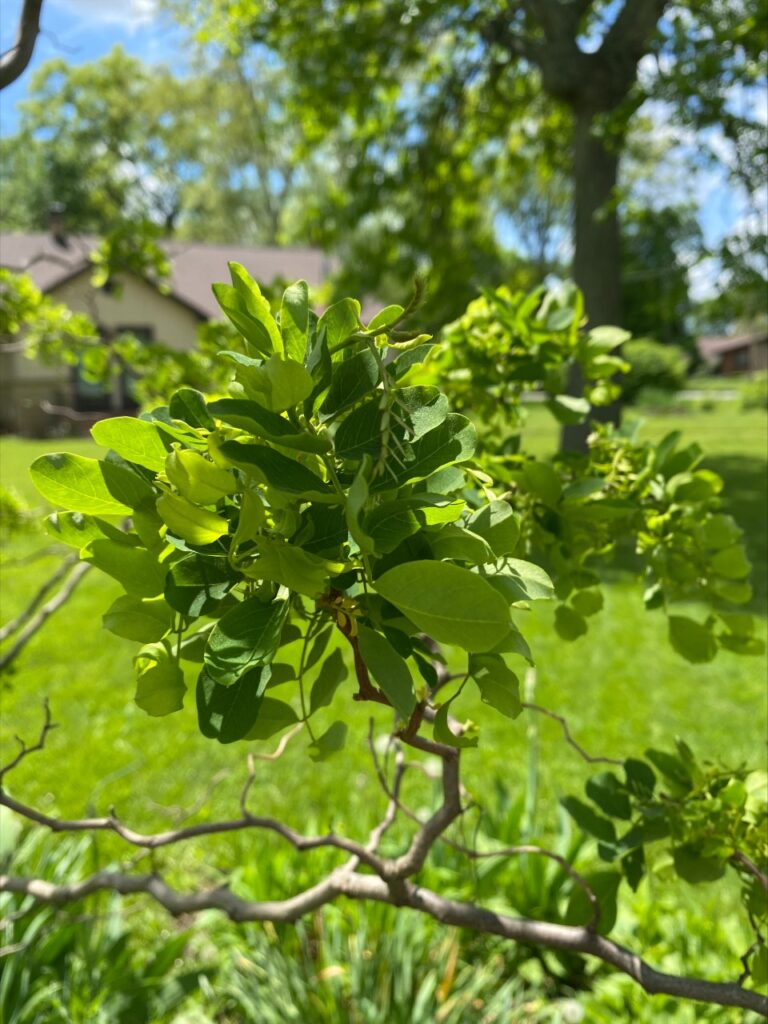 The habitat a Black Locust tree is typically found in well drained areas. The specific tree that I identified, was located right next to a small stream which aligns with the idea that they enjoy soil with ample drainage. The black locust likes almost any soil type that is loose and can adapt relatively well to different climates. You can find black locusts’ on roadsides, in fencerows, or in old pastures.
The habitat a Black Locust tree is typically found in well drained areas. The specific tree that I identified, was located right next to a small stream which aligns with the idea that they enjoy soil with ample drainage. The black locust likes almost any soil type that is loose and can adapt relatively well to different climates. You can find black locusts’ on roadsides, in fencerows, or in old pastures.
In his field guide, Peterson mentions that this tree is an excellent choice for construction projects. The Black Locust is often planted to act as fence posts in new developments. It is also notable that the young shoots and bard of the Black Locust is often poisonous to livestock. Keep your cows away!
Shagbark Hickory
(Carya ovata)
The tall and noble tree known as the Shagbark Hickory has 5-7 hairless, odd, pinnately compound, alternate leaflets. Scientifically known as the Carya ovata, this tree features very shaggy light colored bark that forms long loose strips. This distinctive bark, lends greatly when it comes to identification. The nuts on the shagbark hickory are not rigid and are shockingly edible! Yum!
This tree is usually found in eastern and midwestern parts of the United States and can tolerate a wide range of temperatures and conditions. They do, however, grow their very best in moist soils and humid climate. Seeing as the weather in Ohio is generally very humid the Shagbark Hickory that I located right down the street from my house is growing in the perfect climate. It was surrounded by a diverse range of other trees including pines, oaks and maples. This is very characteristic of this variety as noted in Peterson’s Field Guide. Peterson mentioned that they are usually scattered in forests of oaks, pines, and maples. This tree is excellent when it comes to producing shade and an interesting visual appeal.
The seventh president of the United States, Andrew Jackson, was often referred to as “Old Hickory” which references that tough nature of this particular species of tree. (https://www.nwf.org/Educational-Resources/Wildlife-Guide/Plants-and-Fungi/Shagbark-Hickory)
Callery Pear
(Pyrus calleryana)
Pee-ew!! Ever walked by a white flowering tree and thought there was a skunk in the area? You might have encountered a Callery Pear. Aside from their distinctive fragrance, the tree is known for its decorative qualities. The leaves on a Pyrus Calleryana are simple, alternate, shiny, slightly toothed and heart shape. Perhaps, the shape of the leaves is trying to make up for the smell!! The rough textured bark of this plant is most commonly green or brown.
The Callery Pear tree that I spotted is located right outside my bedroom (good thing I can’t smell through the window!). A few years ago, during a thunderstorm, this tree split entirely in half when it was struck by a bolt of lightning, but since then it has made an amazing recovery! According to Peterson’s field guide the callery pear grows best in the sunshine, but will tolerate some shade. This tree right outside my room gets a lot of sun! It used to have a maple next to it that provided some shade, but since the maple has fallen it has still managed to grow relatively well! The callery pear is can withstand urban living conditions so you might see a callery pear in a city. 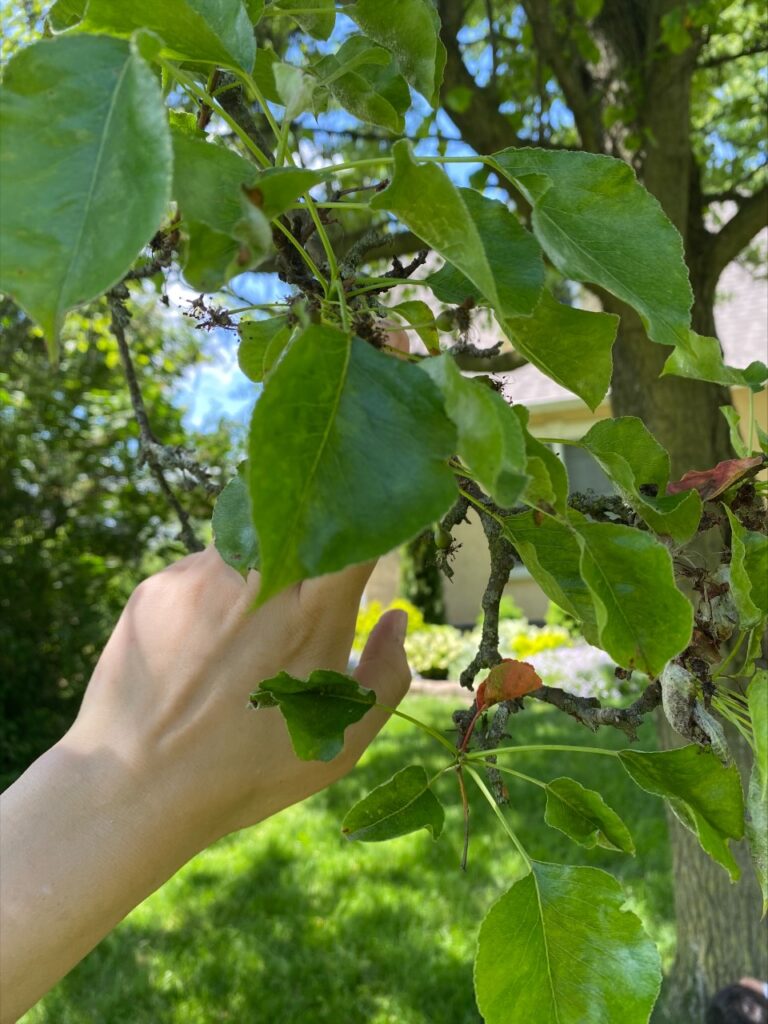
I was shocked to learn that the wood from these trees is hard and close grained making it perfect for making woodwind instruments and furniture! (https://naturewalk.yale.edu/trees/rosaceae/pyrus-calleryana/callery-pear-tree-33)

